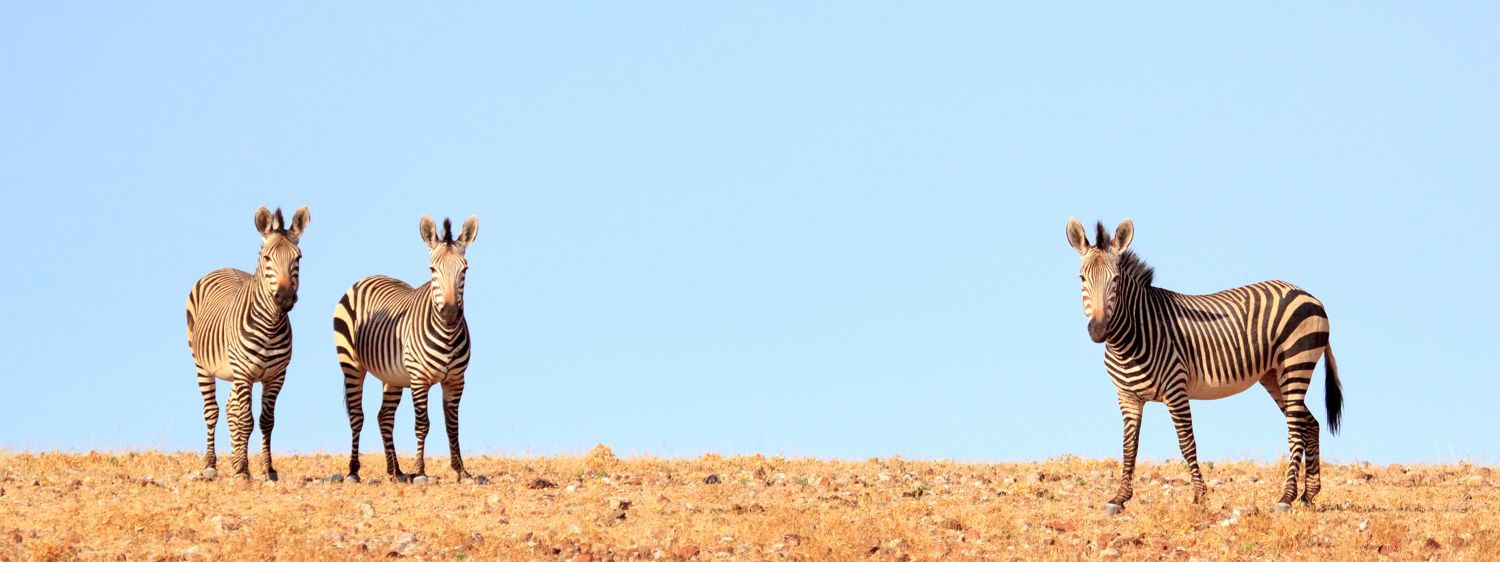The Hartmann’s Mountain Zebra (Equus zebra hartmannae) is a striking and resilient subspecies of mountain zebra, uniquely adapted to the rugged, arid landscapes of southwestern Africa. With its bold black-and-white stripes, creamy white belly, and distinctive grid-like pattern on the rump, this zebra is not only a visual marvel but also a symbol of survival in some of the continent’s harshest terrains.
Habitat and Range
Hartmann’s Mountain Zebras are primarily found in the rocky escarpments and dry mountain ranges of Namibia, particularly in the Kunene and Erongo regions, and parts of southern Angola. Unlike their plains-dwelling cousins, they thrive in steep, broken terrain where few other large herbivores can venture. Their hooves are specially adapted for climbing, giving them excellent traction on rocky slopes.
Behaviour and Social Structure
These zebras are diurnal and highly social, typically forming small family groups led by a dominant stallion. Bachelor groups are also common. They are non-territorial but maintain strong bonds within their herds. Communication is key in their social lives, using vocalizations, body language, and even facial expressions to interact.
Hartmann’s Mountain Zebras are grazers, feeding mainly on grasses, but they will also browse on shrubs and herbs during dry periods. They are well adapted to arid environments and can survive without water for several days, obtaining moisture from the vegetation they consume.
Conservation Status
Although not currently classified as endangered, Hartmann’s Mountain Zebras are considered vulnerable due to habitat loss, competition with livestock, and limited water sources. Conservation efforts in Namibia, including protected areas and community-based wildlife management, have been crucial in stabilizing their populations.



